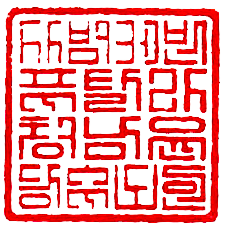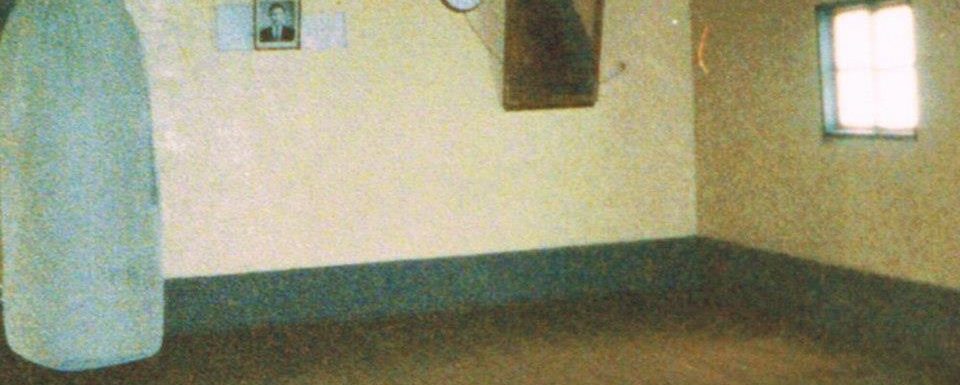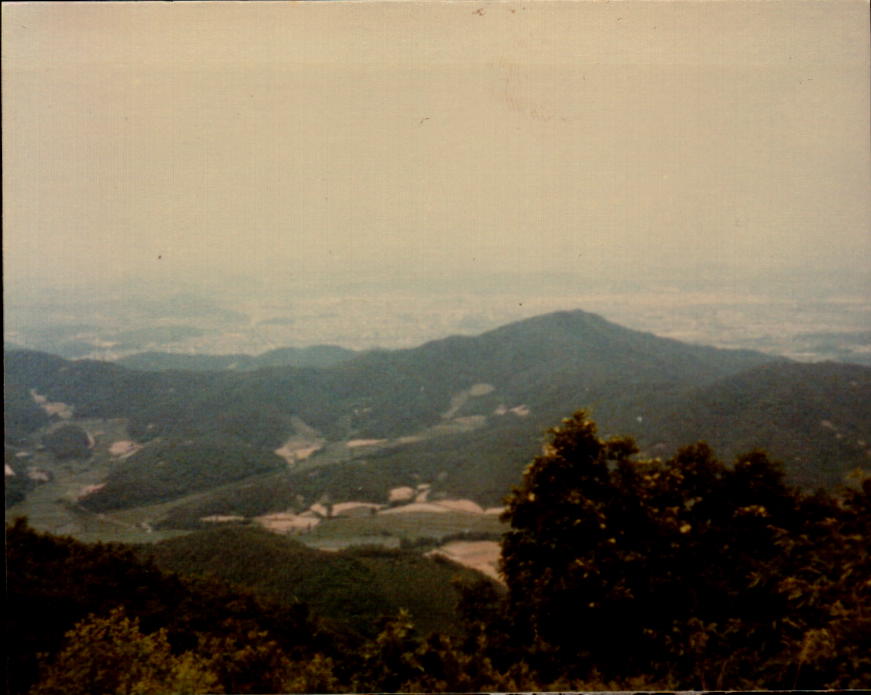
I arrived in South Korea on January 6, 1985. It was NOT the South Korea we know today, with K-Pop, K-Dramas, and one of the most vibrant economies on the planet.
Hyundai were used as taxis and were small, cheap cars, but they were quick and handled well. Samsung made electronics, like radios, etc. but they came in second to Goldstar, who was the main brand at the time. Goldstar as in Lucky Goldstar, as in LG as it’s known today. No, it does not stand for Life’s Good.
I first arrived in Seoul, and was immediately sent to the DMZ (Demilitarized Zone) also known as the North/South Korean border and the 38th Parallel. That is where they tried to station me as a new MP. I spent two days there, and although it was a really cool place and good for an MP’s career, I wanted to do police work, so I turned the assignment down.
I was sent further south, to Camp Ames, a nuclear weapons storage site in a mountain valley Northeast of Daejon.
Outside of the base was a very small village called Chong Dong Ri, but as luck would have it, there was a Tang Soo Do dojang just outside of the gate.
This is where I began learning under 7th Dan Master Yun Tak Bong. Master Yun was a high ranking member of the Korean Tang Soo Do Association and frequently assisted GM Hwang Kee, running things in Chung Nam Buk for the Moo Duk Kwan.
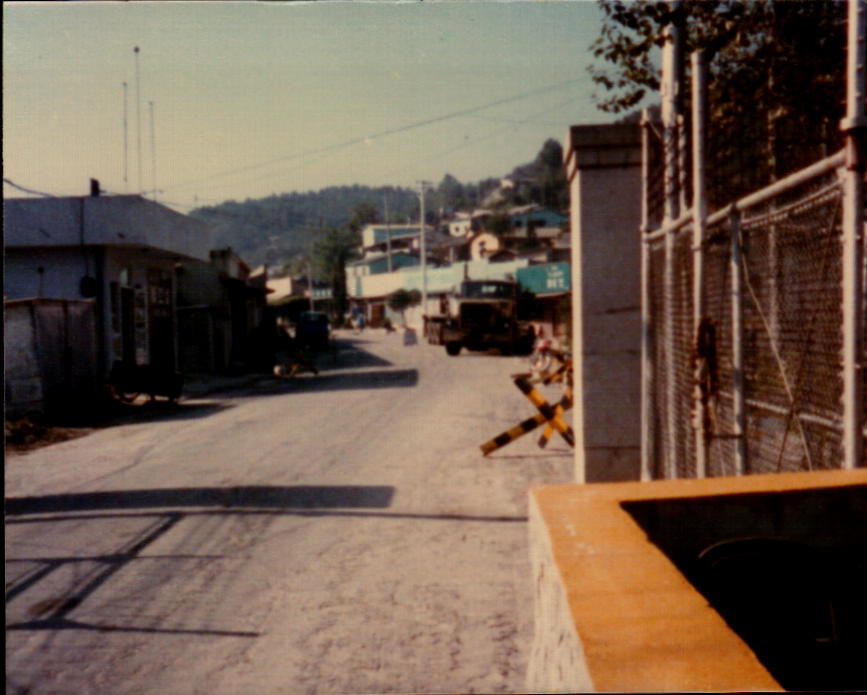

In the photo above Master Yun is standing behind GM Hwang Kee to the right.
The Dojang

Master Yun’s dojang was a fairly small building (photo at left) and to the left of the entrance was a small alley that led to Master Yun’s home. Classes were held Monday through Friday from 7PM to 9PM, but they often ran later.
As soon as you entered the double doors there was a bench to the left, and two wooden posts used for striking, like a makiwara, without any straw or padding.
To the right was Master Yun’s office, which also doubled as a changing room when needed. The training floor was wood, worn smooth and shiny by all of the students before me walking up and down practicing the basics, doing hyung, and sparring. In a few spots there were pieces of boards missing, with sharp edges that I sliced my foot on more than once.
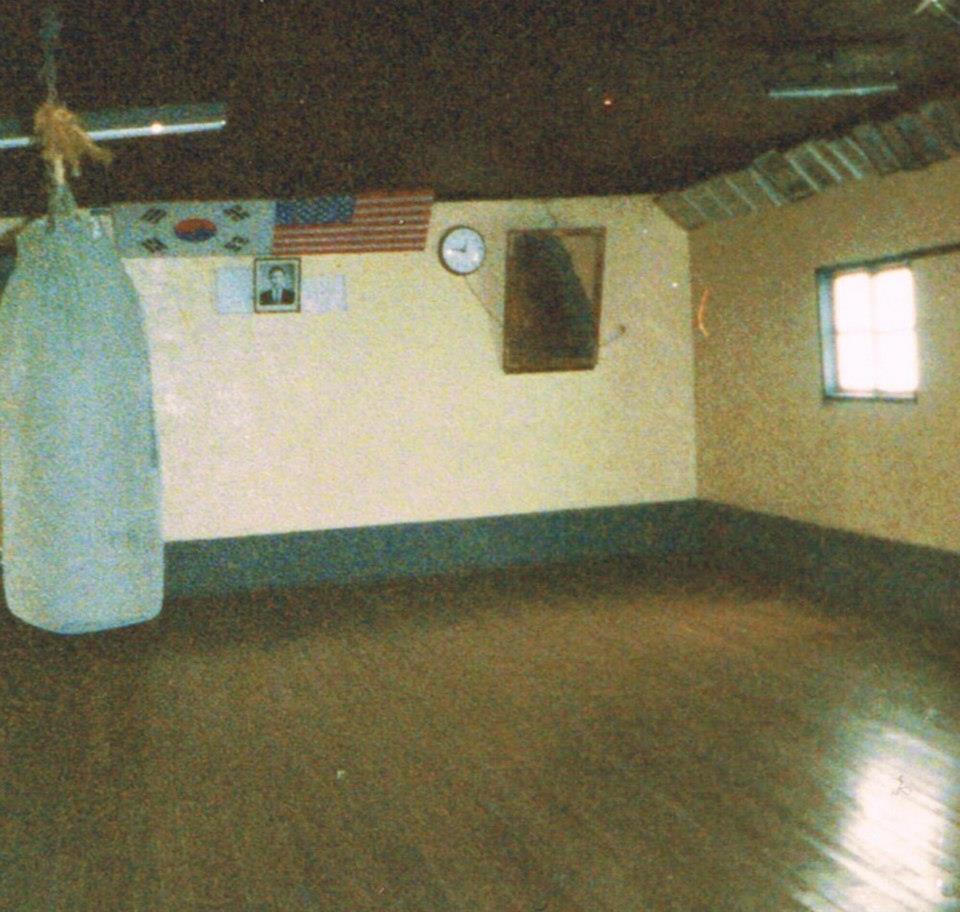
At the front was a photo of Master Yun, the American and South Korean flags, and two mirrors. Around the top of the walls were photos of all of the black belts that earned their way before me. There were a couple of fluorescent lights on the ceiling, and an old Army duffel bag stuffed with rags and who knows what else, that served as a heavy bag.
The winters in Chong Dong were bitter cold as the wind would blow through that valley, freezing the road over the mountain, and preventing anyone from coming in or leaving until it thawed. In the dojang there was no heat except for a small wood burning stove which sat at the back of the training floor. It was like having an extra opponent around, because if you were not aware of your surroundings, you would bump into it and burn your leg or butt!
The summers were hot and humid with no A/C, just open windows and hopefully a breeze. We would leave each class during the summer soaked in sweat, but not training was NEVER an option.
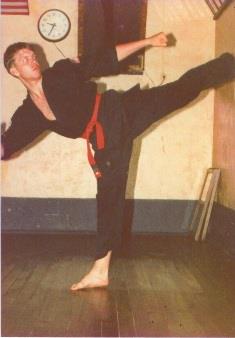
Training in Master Yun’s dojang was old school and tough. We trained hard under his watchful eye, and it was not uncommon for him to step up onto our back leg while we were in a front stance, to ensure you were locking your rear leg.
Each and every class began with bowing in, then sitting for a moment in “meditation” to clear your mind of whatever happened prior to entering the dojang and preparing yourself for the training ahead.
Then it was walking through the whole list of Tang Soo Do basics, which were listed on a poster on the wall. (See below) It is the same basics I go through every time a train to this day.
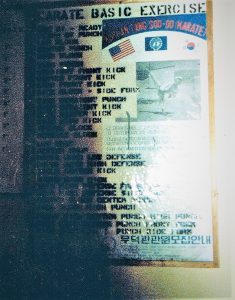
Once the basics were completed, Master Yun would teach whatever technique he wanted to work on. Afterward was hyungs, going through the Kicho hyung, then the Pyung Ahn hyung, up to whatever hyung I was working on at the time. As you reached your limit you sat and watched the senior students perform.
After hyung was one step sparring which was also self-defense training. Last but not least was sparring. Sparring was not like it is today with mouthguards, foot and shin pads, and gloves. If you were smart (which I was) you wore a cup, but that’s it. No foot pads, no gloves.
Master Yun would always say “light contact”, but it was almost always medium to hard. We never went all out, but we received our share of bumps, bruises, bloody noses or lips, and occasionally stitches. Honestly, I believe Master Yun loved it, because he always had a grin on his face when one of us got tagged.
After all of it was over we lined up by rank, dropped into a horse stance and extended our right punch. Master Yun would come around with a block of wood, grab the wrist of our punching hand and smack the first two knuckles with the block ten times. Then we would punch with the left hand, and he would repeat the process, going through every student. At the end we would bow out and class would end.
MY Training
The reason this section is called “My” training, is because when I first started classes there was myself, and two other soldiers who were blue belts. Within my first month, they both quit, and I was Master Yun’s only student for a while. Classes would grow to a maximum of about six or go down to just me.
When I trained with Master Yun alone, I was critiqued and corrected one on one, and got to spend time with him and his family outside of class. I was his senior student at the time, and while most students would show up to class most of the time, they never trained outside of scheduled classes.
As for me, I never missed a class, even if I was sick. On my off days, when I didn’t have military duties, I would go twice a day and train on weekends. The dojang doors were always open, so I would go in and practice my techniques and hyung. Many times, Master Yun would hear me and come see who was making noise.
He would come in, watch me, and make corrections. Other times, it would be his assistant instructor Ms. Lee, who would help make corrections or put me through drills.
Tang Soo Do was my life outside of my Army duties, and I loved every minute of it. Being older now I wish my dumb, young self would have asked Master Yun more about his background, his teachers, etc.
I came to his house to help Ms. Lee with learning English and would eat lunch from time to time with his family. Other times I would bring him to the base NCO Club for a movie and dinner.

Master Yun became much more than my Tang Soo Do instructor; he became a mentor and a dear friend. Although there was a language barrier, I learned so much by watching him and the way he carried himself.
He was well respected in the village and was a village leader. He was also a bone setter, and doctor of sorts, as I watched him set bones and check wounds that seemed to be stitched up with piano wire. I don’t recall a doctor being in the village, however there was a pharmacy.
By his walk you just knew not to mess with him. He had the biggest smile, but could also be deadly serious, but treated everyone kindly. He didn’t just practice and teach Tang Soo Do, he lived it, and I wanted nothing more than to walk in his footsteps.
Sparring with the Master
While I am not a huge fan of social media and the bad things technology has created. I wish we at least had cell phones in the eighties. I would have had so many videos and photos from that time. I had quite a few photos from my time in Korea, however most of them were destroyed when the storage facility the Army kept our stuff flooded while we were in Germany.
One such moment was the one time I sparred with Master Yun. It was during the last few weeks I was in Korea, and I was at the dojang on one of my days off of work. While I practiced, Master Yun came in and asked if I would stay in Korea. I wanted to badly, but they were not allowing extensions in country for Military Police at the time, so I had to leave.
During one of my last impromptu training sessions, Master Yun entered the dojang, put on his dobak, and told me we were going to spar! He must have saw the dumbfounded look on my face, as he smiled, and got into a fighting stance. I was more afraid than anything, and didn’t know what to do.
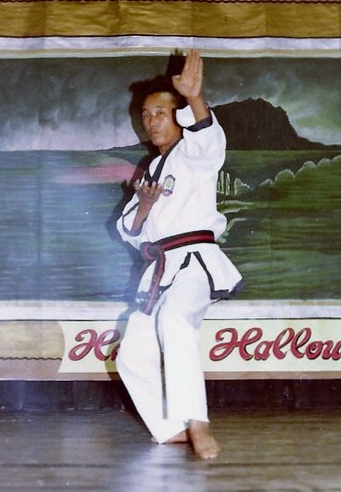
I realized quick, that I needed to defend myself when the knot of his left shoe touched my temple at blinding speed. We would exchange kicks and punches for a few minutes, and I was amazed at his speed, fluid movement and the ease with which he could kick me in the head given his height.
Then, it happened.
Master Yun threw a right round kick to my midsection, and I caught it on my forearm with my left elbow bent, holding his foot.
Without thinking, my body just moved, and I grabbed the front of his dobok and swept his left leg out from under him, taking him to the floor.
We both were shocked, and I thought “Oh shit, he’s going to kill me!” as I immediately let go and helped him to his feet, apologizing. The smile came back to his face and all he said was “Good!” ending the sparring session.
We went through the hyung, and he told me he still had to teach me the Eagle form (Kong Sang Koon) and the Tiger Form (O-Sip Sa Bo). Sadly, I would never get the chance to learn those forms from him as he tragically passed away in a motorcycle accident in 1991.
Master Yun and I stayed in touch through letters (no internet was around) until his letters just stopped coming. I had no idea why and no way to find out. I continued to send letters for months after, with no response. It would be many years later that I would learn Master Yun had passed away in an auto accident riding as a passenger on a motorcycle if I am not mistaken.
In the last couple of letters, we talked about him coming to the states, but it was not to be. I had assumed that something had happened, but even hearing of his passing many years later, it hit like it had just happened. I promised him before leaving his dojang for the last time that I would pass on all he had taught me.
That journey still continues.
